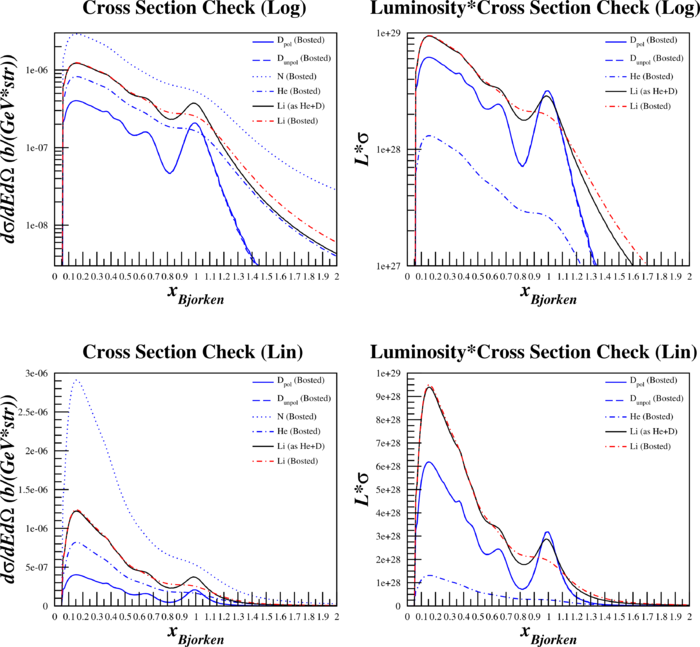Difference between revisions of "Elong-14-03-21"
| Line 26: | Line 26: | ||
! SHMS low x !! SHMS mid x !! SHMS high x !! HMS | ! SHMS low x !! SHMS mid x !! SHMS high x !! HMS | ||
|- | |- | ||
| − | | [[Image:2014-03-21-cs-check-shms1.png]] || [[Image:2014-03-21-cs-check-shms2.png]] || [[Image:2014-03-21-cs-check-shms3.png]] || [[Image:2014-03-21-cs-check-hms.png]] | + | | [[Image:2014-03-21-cs-check-shms1.png|300px]] || [[Image:2014-03-21-cs-check-shms2.png|300px]] || [[Image:2014-03-21-cs-check-shms3.png|300px]] || [[Image:2014-03-21-cs-check-hms.png|300px]] |
|} | |} | ||
Revision as of 15:29, 21 March 2014
LiD
I added LiD into my b1 rates calculations, since from the workshop it sounded like it might be a viable alternative for achieving higher polarization than ND3. Below are the results of ND3, LiD, and LiD-as-He2D (since lithium could be thought of as a tightly bound 4He & deuteron) in the calculations. Each calculation assumes identical target geometry (beads & packing fraction), Pzz, and detector acceptance with the only difference being the material itself.
ND3 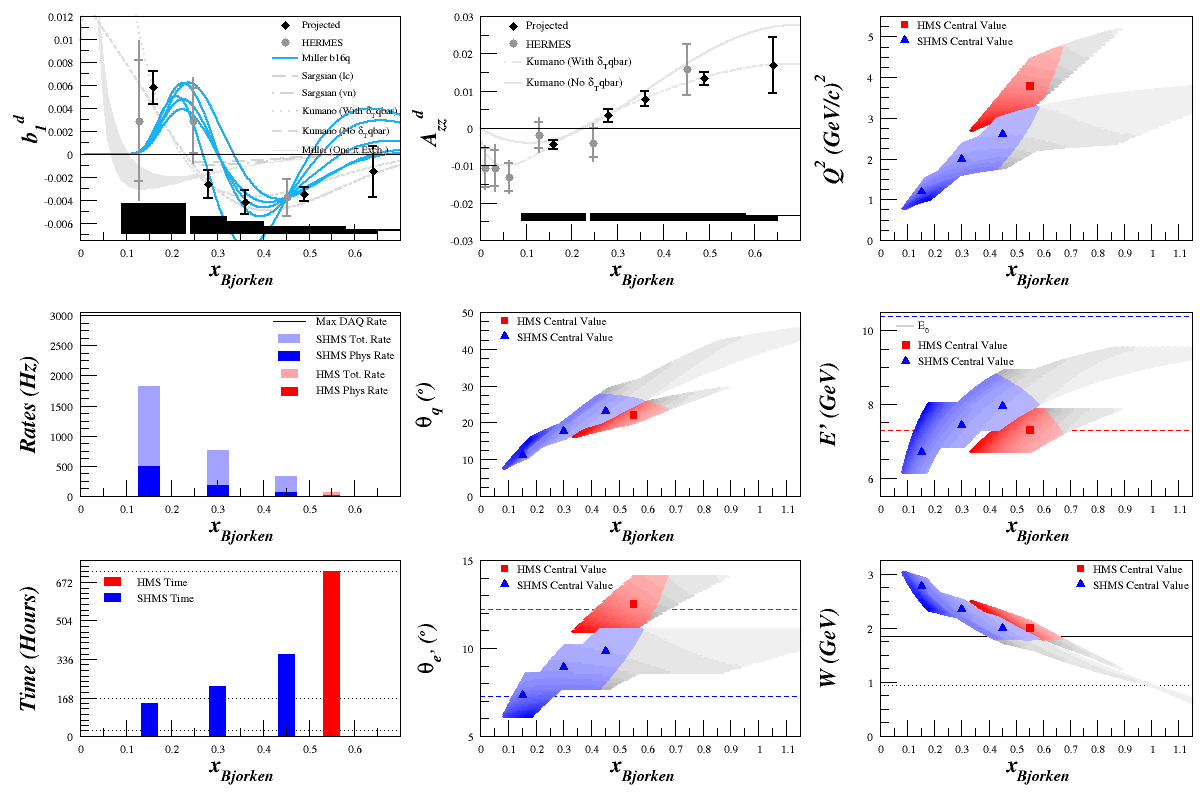
|
|---|
LiD 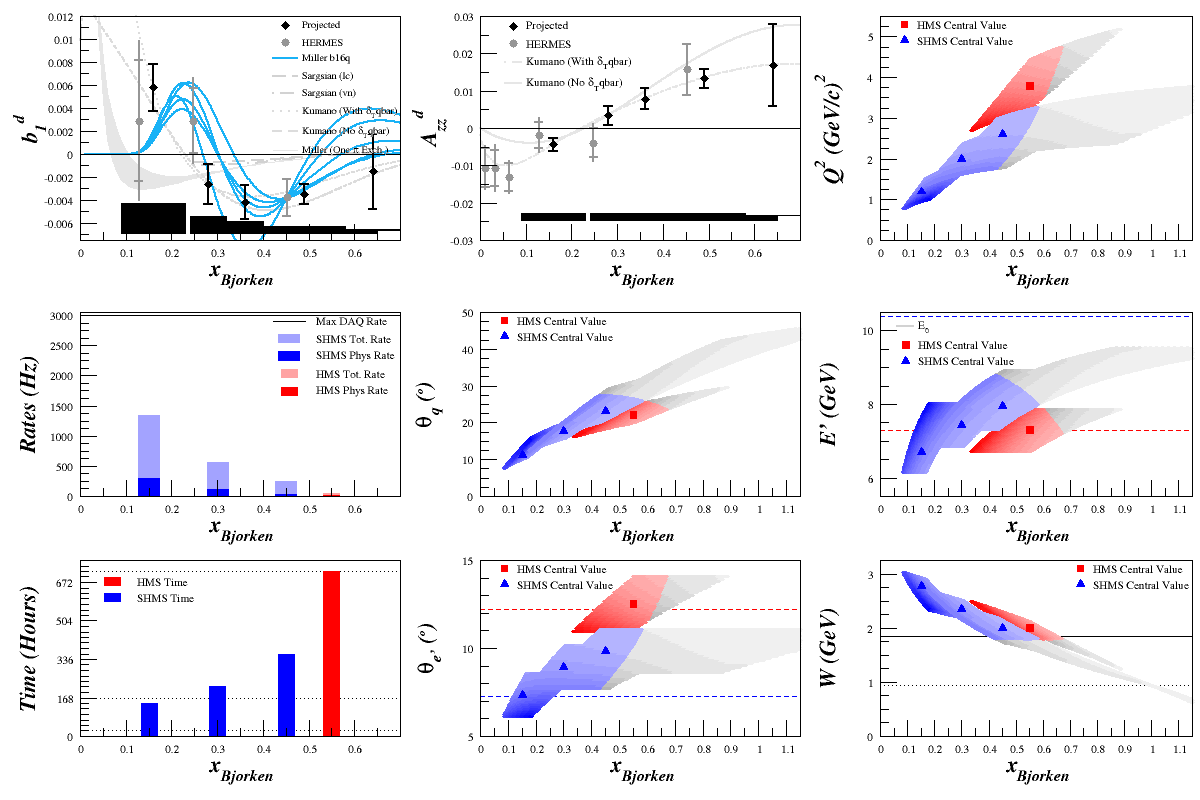
|
He2D 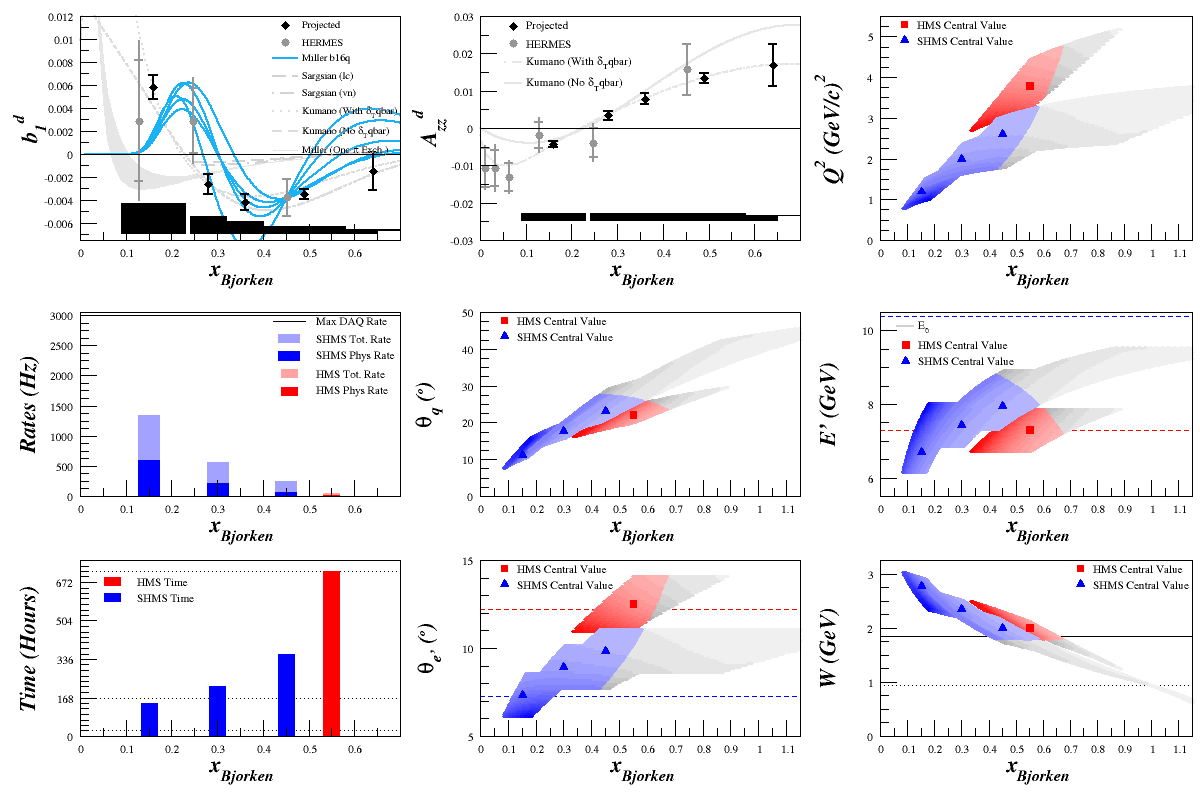
|
Although I expected the physics rate to double between LiD and He2D (since we doubled the number of accepted deuterons), the difference in the total rate seems weird.
Cross Section Checks
To look into the matter, I started looking at the cross sections and the luminosity*cross sections to see how different Li was from HeD
By Spectrometer
Since it's a little difficult to tell exactly where Li and HeD we overlapping for which spectrometer, I broke it down into each:
| SHMS low x | SHMS mid x | SHMS high x | HMS |
|---|---|---|---|
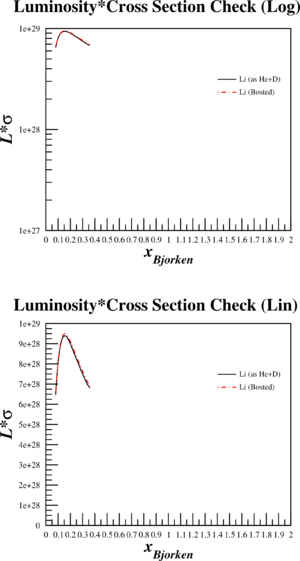 |
 |
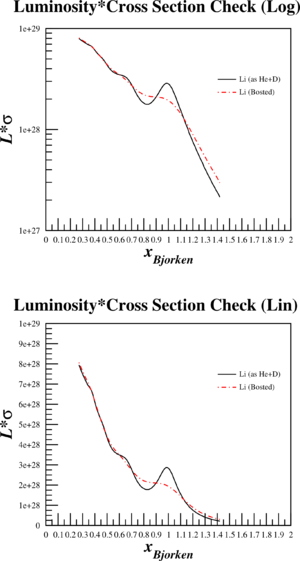 |

|
